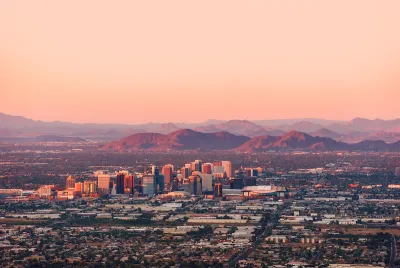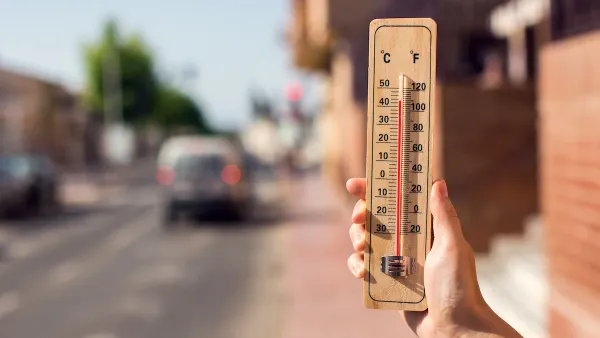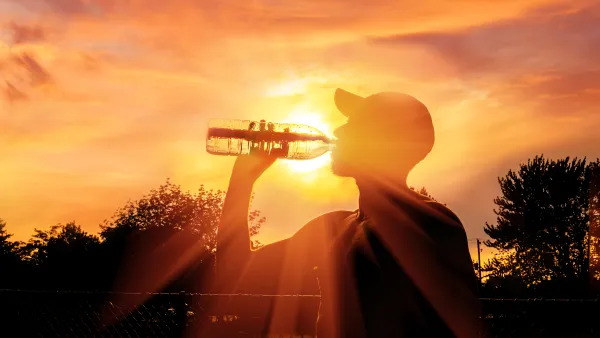The last decade saw a lethal combination of higher temperatures, rapid population growth, and rising eviction rates.

“Relentless heat led to 645 deaths last year in Maricopa County, the most ever documented in Arizona’s biggest metropolitan area,” reports Ariel Wittenberg in Politico. That amounts to a 1,000 percent increase in the last decade, growth attributed to longer, more intense heat waves coupled with rising eviction rates that put more Phoenix residents outdoors and at risk.
According to Wittenberg, “Almost half of the victims last year were homeless — 290 people. Twenty died at bus stops, others were in tents, and an unrecorded number of people were found on the pavement, prone as if on a baking stone.”
The city is using federal funding to operate cooling centers with longer hours, but these lifelines face an uncertain future when those funds run out. “With no stable federal funding, the location of cooling centers and bottled water distribution points changes each year, depending on whether fleeting resources will be provided by the city, county or state. Churches and local charities supplement government aid with their own donations of water and cool spaces,” Wittenberg explains.
While some city councilors don’t want to see resources used to assist unhoused people, Phoenix is one of the cities that is — by necessity — taking extreme heat seriously as a public health hazard, creating a new city office to spearhead heat mitigation strategies. At the state level, an Extreme Heat Preparedness Plan resulted in a new statewide cooling center coordinator and a chief heat officer.
FULL STORY: ‘Just brutal’: Why America’s hottest city is seeing a surge in deaths

National Parks Layoffs Will Cause Communities to Lose Billions
Thousands of essential park workers were laid off this week, just before the busy spring break season.

Retro-silient?: America’s First “Eco-burb,” The Woodlands Turns 50
A master-planned community north of Houston offers lessons on green infrastructure and resilient design, but falls short of its founder’s lofty affordability and walkability goals.

Delivering for America Plan Will Downgrade Mail Service in at Least 49.5 Percent of Zip Codes
Republican and Democrat lawmakers criticize the plan for its disproportionate negative impact on rural communities.

Test News Post 1
This is a summary

Test News Headline 46
Test for the image on the front page.

Balancing Bombs and Butterflies: How the National Guard Protects a Rare Species
The National Guard at Fort Indiantown Gap uses GIS technology and land management strategies to balance military training with conservation efforts, ensuring the survival of the rare eastern regal fritillary butterfly.
Urban Design for Planners 1: Software Tools
This six-course series explores essential urban design concepts using open source software and equips planners with the tools they need to participate fully in the urban design process.
Planning for Universal Design
Learn the tools for implementing Universal Design in planning regulations.
EMC Planning Group, Inc.
Planetizen
Planetizen
Mpact (formerly Rail~Volution)
Great Falls Development Authority, Inc.
HUDs Office of Policy Development and Research
NYU Wagner Graduate School of Public Service





























